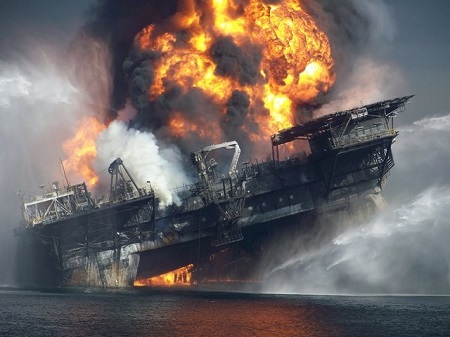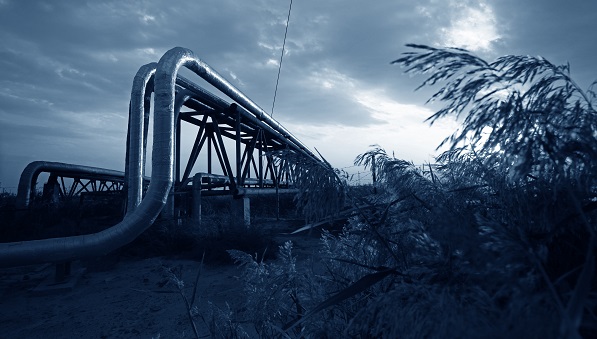Learning from Deepwater Horizon
It still invokes a kind of sick feeling when you hear the words ‘Deepwater Horizon.’ For months, BP grappled with the fact that its Korean-built deep sea oil rig exploded, consequently killing 11 people who were working on board. The nightmare didn’t stop there because for 87 days, the world watched in horror as oil from the rig gushed into the Gulf of Mexico—a total of 4.9 million barrels.
Since 2010, this tragic event has served as a stark reminder that businesses have an obligation to prevent these types of accidents and put financial measures in place to ensure adequate cleanup if they do occur. This was relatively simple for a company like BP, as it boasts revenues of more than $220 billion. Its insurance program, along with its financial standing provided the necessary bandwidth to settle the barrage of lawsuits it was hit with in the aftermath.
But how can suppliers, transportation companies, rig & pipeline manufacturers, and even midmarket companies in other industries bear the weight of loss stemming from a significant pollution event? Businesses can certainly opt for pollution liability insurance in the commercial markets, but policies can carry exclusions which may require businesses to fund losses outright. By forming a captive insurance company to insure pollution risks, midmarket businesses making $2 million+ can fill these gaps while also providing for more efficient planning.
 Learning from Deepwater Horizon means more than lamenting the past—it means recognizing that pollution risks can happen unexpectedly. In business, remaining complacent equates to remaining complicit if suddenly, a pollution crisis emerges. Adopting an alternative risk management plan which includes a captive arrangement has the propensity to see businesses through these situations.
Learning from Deepwater Horizon means more than lamenting the past—it means recognizing that pollution risks can happen unexpectedly. In business, remaining complacent equates to remaining complicit if suddenly, a pollution crisis emerges. Adopting an alternative risk management plan which includes a captive arrangement has the propensity to see businesses through these situations.
Pollution Liability Insurance and Captives
Coverage for pollution liability can be tricky. In many cases, the event that caused the pollution might have occurred years or even decades prior, outside the policy period. Take for example, the case of Decker Manufacturing Corporation v. The Travelers Indemnity Company. The insured, Decker, disposed of waste materials at a municipal landfill operated by the city of Albion from 1966 to 1981. Travelers insured Decker under a CGL policy from 1973 to 1977 that provided coverage for damages because of bodily injury or property damage, caused by an occurrence.
The seepage from the landfill polluted nearby groundwater, the landfill was subsequently named a Superfund site, and Decker became a defendant in EPA litigation against the city of Albion. After Decker notified Travelers of the litigation, Travelers disclaimed the duty to defend and indemnify the insured. Decker eventually settled with the EPA, and thereafter brought suit against Travelers, alleging that it had owed a duty to defend and indemnify. The landfill conformed to contemporary standards back then, was licensed and approved by the State of Michigan, and Decker was never aware of any environmental issues. It was for these reasons that the court ruled that the pollution exclusion did not apply. Luckily for the insured, the court found that Travelers had an obligation to defend and indemnify the company it insured once upon a time (Excerpt Source: Carton Fields, Down in the dumps: court refuses to apply pollution inclusion in landfill seepage case).
Although there was a positive outlook for the plaintiff in this case, businesses insured for a specified time period with commercial coverages may have to contend with the repercussions of pollution events that occur outside the policy period. Even if coverage does exist for a given time period, policies may carry exclusions.
 Midmarket businesses with an interest in a more comprehensive risk management plan should explore forming their own “captive” insurance companies. Coverages written through a self-funded captive can supplement a conventional policy, providing a wider range of coverages that may not be offered in the conventional marketplace. Specifically, pollution liability insurance can address an expansive set of pollution-related risk exposures such as bodily injury, property damage, investigation costs, clean-up costs, fines, and business interruption. Businesses that opt for an alternative risk management plan which includes the formation of a captive insurance company may be eligible for additional planning advantages, such as secured loans (from the captive to the operating company), dividends, and premiums paid on a tax-advantageous basis.
Midmarket businesses with an interest in a more comprehensive risk management plan should explore forming their own “captive” insurance companies. Coverages written through a self-funded captive can supplement a conventional policy, providing a wider range of coverages that may not be offered in the conventional marketplace. Specifically, pollution liability insurance can address an expansive set of pollution-related risk exposures such as bodily injury, property damage, investigation costs, clean-up costs, fines, and business interruption. Businesses that opt for an alternative risk management plan which includes the formation of a captive insurance company may be eligible for additional planning advantages, such as secured loans (from the captive to the operating company), dividends, and premiums paid on a tax-advantageous basis.
Other pollution liability coverages might include:
- The diminution of value relating to the ownership or operation of facilities, including on-site new and or pre-existing conditions
- Third party claims for off-site incidents (where pollution has migrated from the owned property)
- Pollution release from transported cargo carried by covered autos and third party claims from transportation of a product
- Groundwater contamination
- Exposures at the insured’s location
- Exposures emanating from that location
- Transportation to and from that location
- Disposal of waste generated at that location
These coverages become very important in cases when pollution events have occurred in the distant past, or when operating companies are responsible for slow-seepage or long term pollution perils. For many, the fallout doesn’t arise out of a large, calamitous event, but from a gradual undercurrent that doesn’t show its full potential until long after the damage is done.
Pollution Liability Insurance and Its Legitimacy
Pollution liability insurance (written under a captive) has been a hotly-debated topic in industry circles regarding its "legitimacy." But many businesses do need this type of insurance for a variety of pollution risks. However, in order for insurance coverages to appropriately address pollution liability risks, an on-site feasibility study must be conducted. After a detailed and objective assessment of risks, businesses can be covered for potential losses while remaining compliant.
The legitimacy of pollution liability insurance under a captive is directly related to how and why coverages are designed, implemented, and managed. For businesses with genuine risks, captive managers should verify these risks as well as expose what other hidden exposures exist. Thereafter, a client should expect to receive full support during the life of the captive, including tax, insurance, and legal services.
The Financial Ramifications of Pollution Risks
We saw it with the BP oil spill. We’ve seen it with the Decker Manufacturing Corporation. The financial stakes are especially high when it comes to pollution risks. This is why that pollution risks are identified, mitigating them and funding potential losses should be deemed a top priority.
Another highly-publicized case showed that businesses can be liable for damages, including fines from safety violations. On April 17, 2013, an ammonium nitrate explosion occurred at the West Fertilizer Company storage and distribution facility in West, Texas, while emergency services personnel were responding to a fire at the facility. Fifteen people were killed, more than 160 were injured, and more than 150 buildings were damaged or destroyed. According to reports, the company failed to register its 270 tons of ammonium nitrate with Homeland Security as required by law. Prior to the explosion in 2011, the Pipeline and Hazardous Material Safety Administration (PHMSA) fined the company $5,250 for safety violations. At least seven lawsuits were filed against Adair Grain Inc., which owned the West Fertilizer Company facility—the case was eventually settled for an undisclosed amount (Excerpt Source: Reuters, Texas fertilizer company didn't heed disclosure rules before blast).

In yet another case, a business came under fire for the illegal disposal of wastewater. On February 2nd, 2014 more than 80 tons of coal ash, a highly toxic byproduct of coal burned for electricity, leaked out of a Duke Energy containment pond and into the Dan River. The spill ultimately coated 70 miles of the river in North Carolina and south central Virginia. Coal ash contains toxic chemicals and heavy metals including lead, selenium, mercury and arsenic; though these are threats to the environment, to ground water and to human health and wildlife, coal ash isn't classified as hazardous and isn't federally regulated. But on March 20th, North Carolina regulators cited Duke for illegally pumping 61 million gallons of coal ash wastewater into the Cape Fear River. Additionally, the company was fined $25.1 million for groundwater damage from coal ash (Excerpt Source: CBS News, Duke Energy apologies for nation’s third-largest coal-ash spill).
Whether you believe that pollution contributes to global warming or not, the financial consequences of a significant pollution event can be dire. The aforementioned examples show that businesses of all sizes can be affected by losses. Businesses that want to take a proactive approach in offsetting these risks should invest in a risk management strategy that can also act as a comprehensive planning solution. Forming a captive can help fund losses and keep businesses operational. Overall, pollution liability insurance written under a captive is a powerful way to strengthen businesses in the face of both overt and hidden pollution risks.




